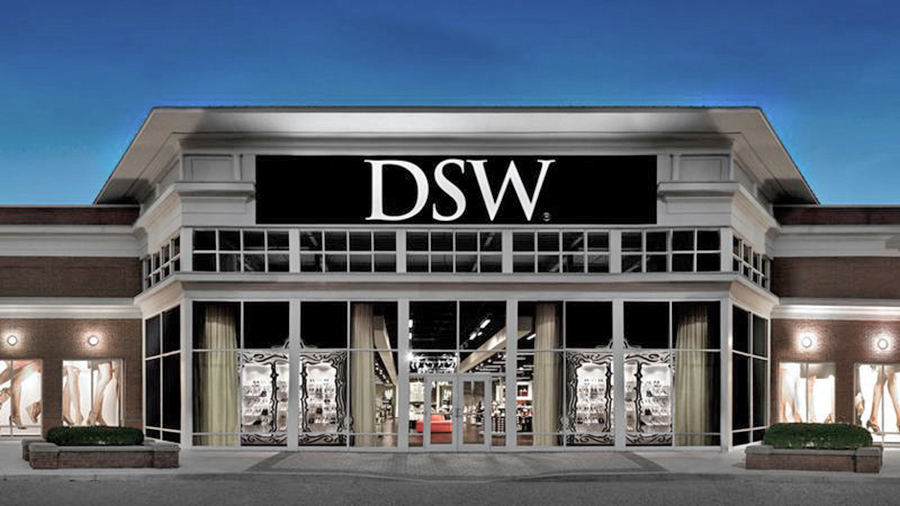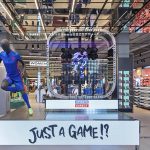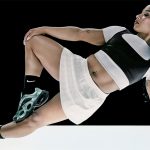Designer Brands, Inc. CEO Doug Howe laid it out in black and white at the beginning of a conference call with analysts to discuss fiscal third-quarter results.
“The third quarter was difficult for our business,” Howe said bluntly after a “good morning” greeting to start the call. “Macro headwinds continued to impact us, most acutely within our Retail segment traffic as consumers remain under pressure and the overall footwear market contracted for the first time since the pandemic.”
Howe said that because the business is heavily weighted toward dress and seasonal, unseasonably warm weather also had an outsized impact on the company’s top line.
Fiscal third-quarter net sales decreased 9.1 percent year-over-year (YoY) to $786.3 million in the three-month period ended October 28. Total comparable sales decreased 9.3 percent YoY for the period. U.S. retail comps were reportedly down 9.8 percent in the quarter, while Canada posted comps down 7.7 percent in the quarter.
“We also faced headwinds that we believe demonstrate our need to operate with even greater speed while increasing the level of innovation, newness and fashion in our assortments,” he suggested. “To this end, we have made several strategic decisions regarding leadership across our organization, and we will be diligent as we embark on the journey of backfilling these roles in order to best position our business for the future.
“During our second-quarter earnings call, we communicated that our full-year guidance assumed we sat at a key inflection point and a retail comp performance would need to meaningfully improve, supported by a strong September throughout the balance of the year to meet our expectations. We also noted the possibility for headwinds to worsen further, something that could hamper the sequential improvement we required.
“During the third quarter, we experienced a sales shortfall within the fall season, specifically September, particularly related to broad-based weakness in seasonal and dress,” Howe detailed, describing the business across September and October. “Conversely, a casual portion of our retail business continued to perform well, delivering comp sales growth in the mid-single digits.”
Howe said the company also sees the retail customer continuing to lean into value, and the intentional rebuilding of the clearance business within the company’s U.S. retail segment helped to offset broader declines slightly. Clearance sales were down only 3 percent, significantly better than the total sales trend, down more than 9 percent in total sales and comps.
“However, none of these were significant enough to offset the precipitous decreases we experienced in dress and, more notably, in boots,” he cautioned.
Within our Retail segments, which include DSW stores, Shoe Company and its related e-commerce sites, the top line fell short of expectations, which Howe said was driven by “seasonal product demand, specifically boot demand following meaningfully year-over-year.”
“This was a dynamic felt industry-wide,” he said. “We have long been a market leader in seasonal footwear, which is boots and sandals, and this continued to represent a material portion of our sales in Q3.”
Howe noted that, according to Circana, third-quarter seasonal footwear was down 16 percent based on dollar sales over the last year in the total market, which was in line with the performance at DSW.
“However, while seasonal footwear represents about 20 percent of the total market in the third quarter, it represented nearly 40 percent of DSW’s business, resulting in disproportionate pressure on our performance,” Howe shared.
“As we look across our entire assortment and continue to learn more about evolving consumer preferences in both category mix and shopping channels, we are adapting our own strategic approach,” Howe continued. “We know we can perform better across all categories, including non-seasonal, and get back to our roots of being a product-led, data-driven merchant organization, quick to supply product that meets the trends that customer is leaning into.”
Laura Denk, the former Michael’s merchandising exec hired as DSW president in July, said the retailer has been getting preferred assortments from brands, even those that had pulled out over the last few years.
“With our unparalleled access to the female athlete and the growing demand for athletic and athleisure product, these brands continue to prioritize placement in our channels,” Denk stated. “For example, Nike products began coming back online in September and as of early November, is fully rolled out in all DBI channels. Nike has instantly become one of our top national brands, both in stores and through our e-commerce sites, and we couldn’t be happier with this relationship.”
Denk also said that other national brands are returning to DSW.
“In the spring, we plan to bring Under Armour back into our collection of high-quality offerings,” she added. “We are also excited for our dominant and growing relationships with Birkenstock and Skechers.”
Denk added that while DSW remains a leader in the industry, they have seen DSW brand awareness erode in recent years.
“As it stands currently, we can do more to bring the hottest brands and the excitement that comes with them to DSW’s assortment to reinforce a differentiated and relevant offering,” Denk asserted. “My vision for DSW’s assortment is trend right shoes that align with consumer demand.”
Denk said she has directed buyers to maintain greater liquidity, listen to consumers and seize opportunistic buys.
“More tactically, I plan to leverage DSW’s unique data and insights from our database of nearly 30 million loyalty members to identify trends and dynamically adjust our offerings and our marketing to provide a selection that resonates with evolving consumer preferences,” Denk said. “This product-led, data-driven assortment strategy brings back the passion and creativity that good merchants thrive on, including building strong and growing relationships with our national brand partners.”
Howe said the company met expectations in Q3 in its Brand Portfolio segment, with overall sales down 12.5 percent, in line with expectations.
“Declines in our legacy brands wholesale business were offset by the additions of Keds, Topo and Hush Puppies, as well as strong performance at vc.com,” Howe said. “We are building momentum and gaining traction across our brand portfolio as we continue to prioritize long-term sustainable growth within this segment.
“At the beginning of our brand-building journey, the portfolio we controlled was highly focused on dress and seasonal with significant white space opportunities in the casual and athleisure space, which drove us to make key acquisitions. Since that time, we have made notable progress growing our portfolio and doubling the sales of our own brands across DBI’s business, which continues to be central to our growth story moving forward.”
Howe called out Topo Athletic, noting that they saw a sequential increase in the quarter and a significant improvement in the DTC site throughout.
“In October, we launched three new shoes, including a new waterproof trail runner and a new low-top hiker. We also refreshed the ST-5, which pairs a minimally cushioned zero drop platform with Topo’s signature fit for a natural, comfortable run experience and/or workout session at the gym,” he said. “I want to take a moment to thank our partners at REI, a key retail partner for us as we continue to expand our partnership and increase brand awareness for Topo.”
The Vince Camuto brand reportedly posted its highest demand day of 2023 in the quarter as well as the largest full-price non-promotional day in vc.com history spurred by the incredibly successful first influencer collaboration with Dress Up Buttercup, a lifestyle brand by Dede Raad, who has over one million followers on Instagram.
Howe said vc.com comp sales were reportedly up 7 percent for the quarter compared to the year-ago period. CFO Jared Poff added that the increase came on top of a 27 percent comp last year and is also up 26.3 percent for October.
“This quarter’s success was largely driven by the brand’s decision to lean into strong consumer demand for wide and extra wide shaft boots,” Poff said.
Still, Poff reported that wholesale sales were down roughly 22.7 percent, in line with expectations, as they lap strong wholesale sales unlocked by pent-up demand in that channel last year following supply chain disruptions.
Income Statement
Consolidated gross margin was 32.6 percent of net sales in the third quarter, compared to 33 percent in Q3 last year, a decrease of 40 basis points driven primarily by an increase in promotional pricing and the deleverage of fixed store occupancy costs, offset by lower freight and shipping costs.
“That said, our gross margin continues to be fundamentally stronger than pre-pandemic with consolidated gross margin up 330 basis points compared to the third quarter of 2019, and we will continue to look for ways to bring further efficiencies to our operating model,” Poff added.
Poff said the adjusted SG&A ratio for the third quarter was 28.9 percent of sales compared to 25.5 percent in the third quarter of 2022, driven primarily by deleverage from the top-line pressures against an increasingly fixed expense base along with an increase in marketing expense.
For the third quarter, adjusted operating profit was 4 percent of sales compared to 7.8 percent for the prior-year quarter.
“In the third quarter, we had $8.8 million of net interest expense and our effective tax rate on our adjusted results was 34.6 percent compared to 25.9 percent last year,” Poff added.
Reported net income attributable to Designer Brands, Inc. was $10.1 million, or diluted EPS of 17 cents a share, including net after-tax charges of 7 cents per diluted share from adjusted items, primarily related to restructuring, integration, and CEO transition costs as well as valuation allowance change on deferred tax assets.
Third quarter adjusted net income was $14.8 million, or 24 cents diluted EPS, versus $46.1 million, or 67 cents a share, last year.
Adjusted net income was $14.8 million for the period, or adjusted diluted EPS of 24 per share.
“The top-line weakness ultimately flowed through, leading to operating deleverage against a largely fixed expense base and resulted in an adjusted EPS of 24 cents,” added Poff. “Our team is aware of the factors that led to this situation and is making progress on sustainable improvements across all elements of the business.”
Balance Sheet
Cash and cash equivalents totaled $54.6 million at the end of the third quarter, compared to $62.5 million at the end of the corresponding period last year, with $213.3 million available for borrowings under our senior secured asset-based revolving credit facility and $85.0 million available for borrowings under our new senior secured term loan credit agreement.
On October 31, 2023, DBI borrowed an additional $25.0 million under the Term Loan, with any remaining borrowings to be taken by January 31, 2024. Debt totaled $375.5 million at the end of the third quarter of 2023 compared to $415.5 million at the end of the same period last year.
Net cash provided by operating activities was $202.5 million for the first nine months of 2023 compared to $37.9 million during the comparable period last year.
DBI ended the third quarter with inventories of $601.5 million, down roughly 12 percent compared to $681.8 million at quarter-end last year and down sequentially from $606.8 million in the second quarter. On a retail inventory per square footage basis, the retailer ended down 11.5 percent versus the third quarter of 2022.
Wholesale inventory ended the third quarter up 2 percent and, adjusted for the acquisition of Topo and Keds; inventory would have been down roughly 20 percent when compared to last year.
“Headed into the fall, we were acutely aware of the net risk position we were facing. And as such, we were very strategic with our inventory investments,” Poff said. “We continue to remain nimble in our approach to our assortment. As we prioritize maintaining a healthy inventory position, we strategically deployed promotions for Black Friday and Cyber Monday, which helped to drive traffic in stores and online.”
Store Openings and Closings
During the third quarter of 2023, DBI opened one store in the U.S. and six stores in Canada, resulting in a total of 499 U.S. stores and 144 Canadian stores as of October 28, 2023.
Return to Shareholders
During the third quarter of 2023, the company repurchased an aggregate 7.6 million Class A common shares at an aggregate cost of $79.7 million, including transaction costs and excise tax. As of October 28, 2023, $87.7 million of Class A common shares remained available for repurchase under the share repurchase program.
A dividend of 5 cents per share of Class A and Class B common shares will be paid on December 14, 2023, to shareholders of record at the close of business on November 30, 2023.
Updated 2023 Financial Outlook
Poff said that based on what they have seen through the fourth quarter to date, they do not expect the sales pressures to alleviate as they wrap up the year, especially given the ongoing uncertainty in the macro environment.
“Given the quarter’s results, we are addressing our full-year outlook,” said Poff. “We are now planning for DBI net sales to be down high single digits with retail comps also down high single digits for the year, implying DBI net sales to be flat to down low single digits for the fourth quarter when taking into account the 53rd week.
“While we don’t anticipate we will see the demand that we lost in September, boot sales materialize in the fourth quarter; we will remain in a competitive posture to keep our inventory at an appropriate level. In order to do so, higher promotions will continue to be necessary.”
This all results in expected adjusted EPS for the full year in the range of 40 cents to 70 cents a share.
“The change in this revised adjusted EPS expectation is a substantially larger percentage change than the change in top-line expectations as a result of a highly fixed expense base, which is anticipated to come in as originally communicated,” Poff concluded.
DBI Shares were down 33.3 percent on Tuesday to close at $8.54 per share.
Photo courtesy DSW
















